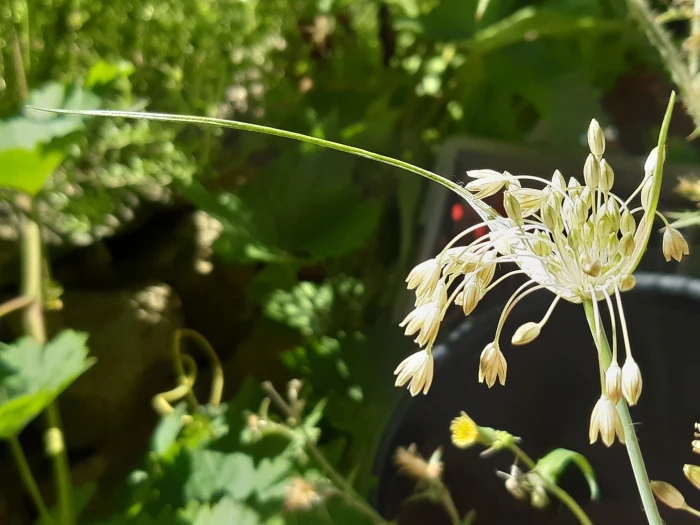Mediterranean Onion
(Allium longispathum)
Mediterranean Onion (Allium longispathum)
/
/

Martin Scheuch
CC BY 4.0
Image By:
Martin Scheuch
Recorded By:
Copyright:
CC BY 4.0
Copyright Notice:
Photo by: Martin Scheuch | License Type: CC BY 4.0 | License URL: http://creativecommons.org/licenses/by/4.0/ | Rights Holder: Martin Scheuch | Publisher: iNaturalist | Date Created: 2021-06-26T11:53:01-07:00 |






Estimated Native Range
Climate Requirements for Clinton, Mississippi
| This Plant | Your Site | Plant Suitability for Your Location | ||
|---|---|---|---|---|
| • Precipitation | 27" - 39" | 56" | Aquatic | Aquatic |
| • High Temp. | 76°F - 84°F | 92°F | Your summer temperatures are normal for this plant. | Excellent |
| • Low Temp. | 31°F - 40°F | 34°F | Your winter temperatures are normal for this plant | Excellent |
This plant may not grow well at your location - your precipitation is too high.
Summary
Allium longispathum, commonly known as Mediterranean Onion, is a perennial herb native to rocky, dry scrublands and coastal areas in Europe especially along the Mediterranean Basin. This species typically forms clumps reaching 20-50 cm in height. Mediterranean Onion is characterized by its long, slender leaves and tall, sturdy stems that bear umbels of star-shaped, pink to purple flowers during the late spring and early summer months. The flowers are attractive to pollinators and can add a touch of color to the garden landscape.
Mediterranean Onion is valued for its ornamental flowers and its ability to thrive in dry, poor soils with minimal maintenance. It is often used in rock gardens, as border plantings, or in naturalized areas where its drought tolerance is an asset. For optimal growth, it requires well-drained soil, full sun to partial shade, and only occasional watering once established. While it is not commonly known for significant pest or disease issues, onion thrips and downy mildew can sometimes affect the plant. It is also worth noting that Allium species can be toxic to pets if ingested.CC BY-SA 4.0
Mediterranean Onion is valued for its ornamental flowers and its ability to thrive in dry, poor soils with minimal maintenance. It is often used in rock gardens, as border plantings, or in naturalized areas where its drought tolerance is an asset. For optimal growth, it requires well-drained soil, full sun to partial shade, and only occasional watering once established. While it is not commonly known for significant pest or disease issues, onion thrips and downy mildew can sometimes affect the plant. It is also worth noting that Allium species can be toxic to pets if ingested.CC BY-SA 4.0
Plant Description
- Plant Type:
- Height: 1-2 feet
- Width: 0.5-1 feet
- Growth Rate: Moderate
- Flower Color: Pink
- Flowering Season: Summer
- Leaf Retention: Deciduous
Growth Requirements
- Sun: Full Sun, Part Shade
- Water: Medium
- Drainage: Fast, Medium
Common Uses
Border Plant, Butterfly Garden, Deer Resistant, Drought Tolerant, Low Maintenance
Natural Habitat
Rocky, dry scrublands and coastal areas in Europe especially along the Mediterranean Basin
Other Names
Common Names:
Scientific Names: Allium longispathum , Allium amansii , Allium boryanum , Allium collinum , Allium dentiferum , Allium intermedium , Allium intermedium var. bulbiferum , Allium longispathum , Allium monspessulanum , Allium oleraceum
GBIF Accepted Name: Allium longispathum